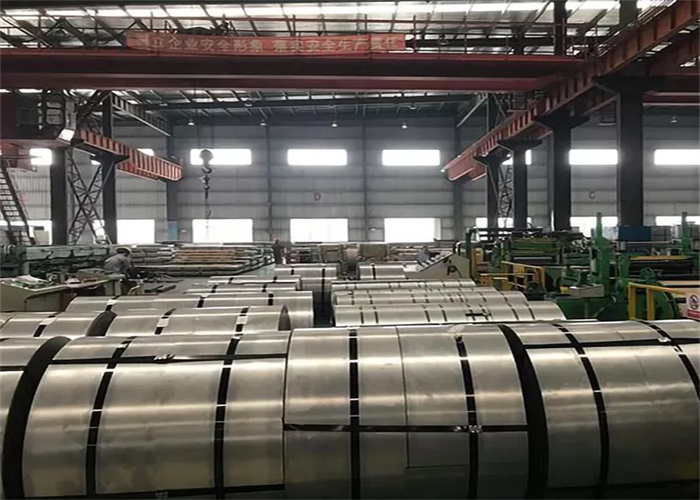Rolling is a metal forming process that uses a series of rolls to change the shape, improve uniformity and enhance the mechanical properties of the material. Hot rolled steel refers to rolling the steel at high temperatures, while cold rolled steel is essentially hot rolled steel that has been further processed, cooled at room temperature, and annealed or tempered to roll.
The rolling process forms hot rolled steel at temperatures above its recrystallization temperature (usually 1700° F or higher). The high temperature makes the steel easy to form, shape and manufacture into larger sizes with higher formability and machinability, more accessible for subsequent processing operations.
Because hot rolled steel shrinks slightly during the cooling, there is less control over its final shape. Also, hot rolled steel involves less processing to make it cheaper than cold rolled steel. So it is used in a wide variety of industries, such as agricultural equipment, structural components, automotive parts, construction materials, railroad equipment, stampings, and other applications that do not require extremely tight tolerances.
Cold rolled steel is, in essence, hot rolled steel that has been deeply processed, which is further processed by cooling and annealing or temper rolling at room temperature, and then the steel is shaped by bending or cold roll forming to achieve the desired shape. This gives cold rolled steel more accurate dimensions and better surface quality.
Cold rolled steel provides a more aesthetically pleasing and visually appealing surface and excellent properties, making them widely used in many fields, including aerospace structures, household appliances, metal furniture, mechanical parts, automotive parts, and more applications where high tolerances, surface conditions, concentricity and straightness are required.

Better machinability: The hot rolling process occurs at high temperatures, so the processed material is easy to shape and form.
Almost no internal stresses: Hot rolled steel cools at room temperature, which means it’s free from internal stresses that can arise from quenching or work-hardening processes, giving the material an essentially normal structure.
Flexibility: more ductility and toughness, easy to turn into various shapes
Slightly rounded corners of sheet products: due to shrinkage and less precise finishing
Dimensional defects: caused by heating (expansion) and cooling (shrinkage, warpage)
Slight distortion: cooling may result in a slightly trapezoidal shape rather than a perfect square angle
Rough textures & scaly surfaces: residues from extreme temperature cooling that can be removed by pickling, grinding, or sandblasting
Higher strength: Cold rolled steel is 20% stronger, harder, and stronger than hot-rolled steel, which makes it more suitable for high-stress applications. The metal is formed at a lower temperature, so the hardness, tensile fracture resistance and deformation resistance of the cold rolled steel are all increased by work hardening.
Better surface finish: Products made from cold rolled steel typically have a brighter, more finished surface and tighter tolerances, free of rust and oxide, allowing for a wider range of surface finishes and more aesthetically pleasing surface finishes.
Internal stress: Internal stress can lead to unpredictable warpage if the steel is not stress relieved before cutting, grinding, or welding.
Accurate shape: consistent and straight
Square tubes: with well-defined angles for better concentric uniformity and straightness
High performance: improved hardness, excellent resistance to pull-off and work-hardening deformation
Choosing the most suitable one for your needs can reduce the cost of raw materials and avoid the time and money spent on additional processing. GNEE is one of the leading grain oriented electrical steel manufacturers and cold rolled steel coil suppliers in China. Please feel free to contact us for more info about our products or ask for some help with your project!